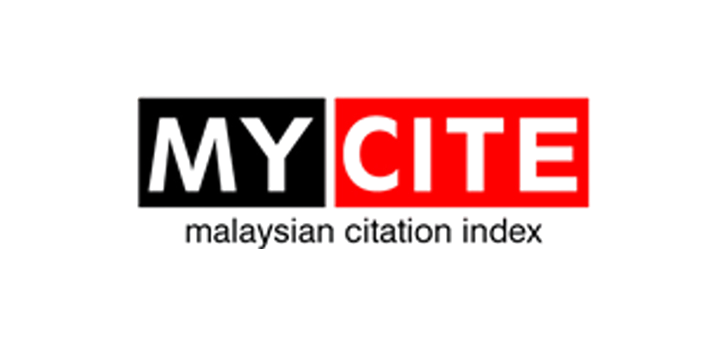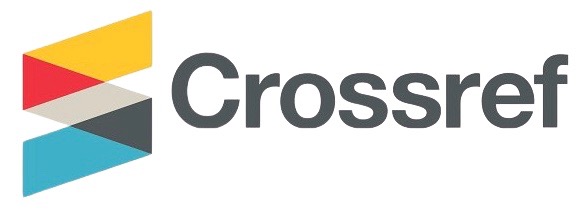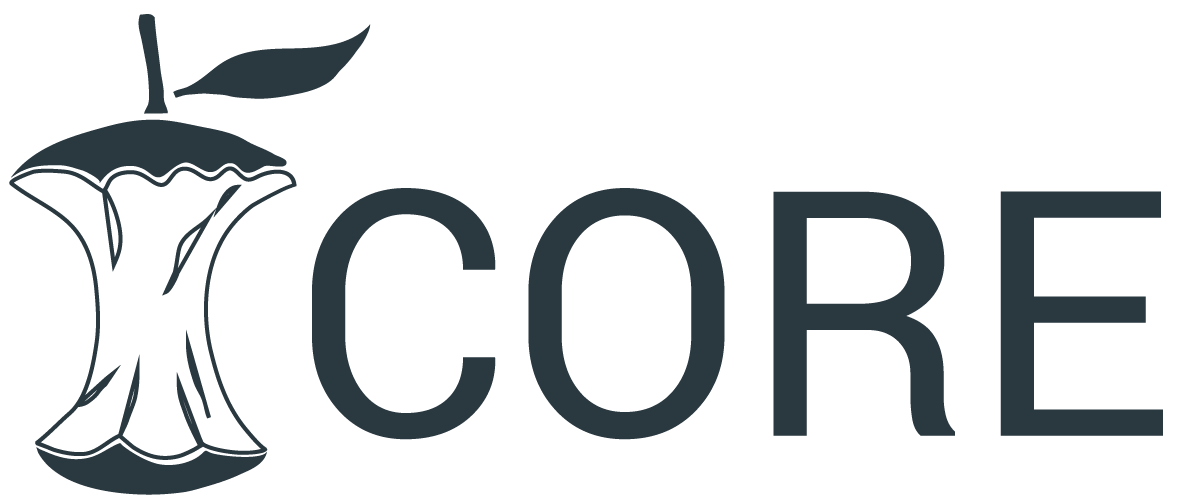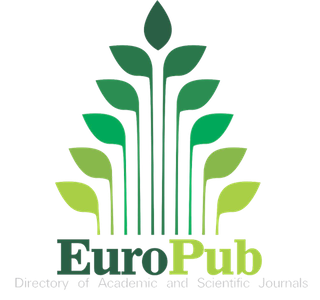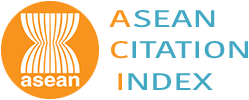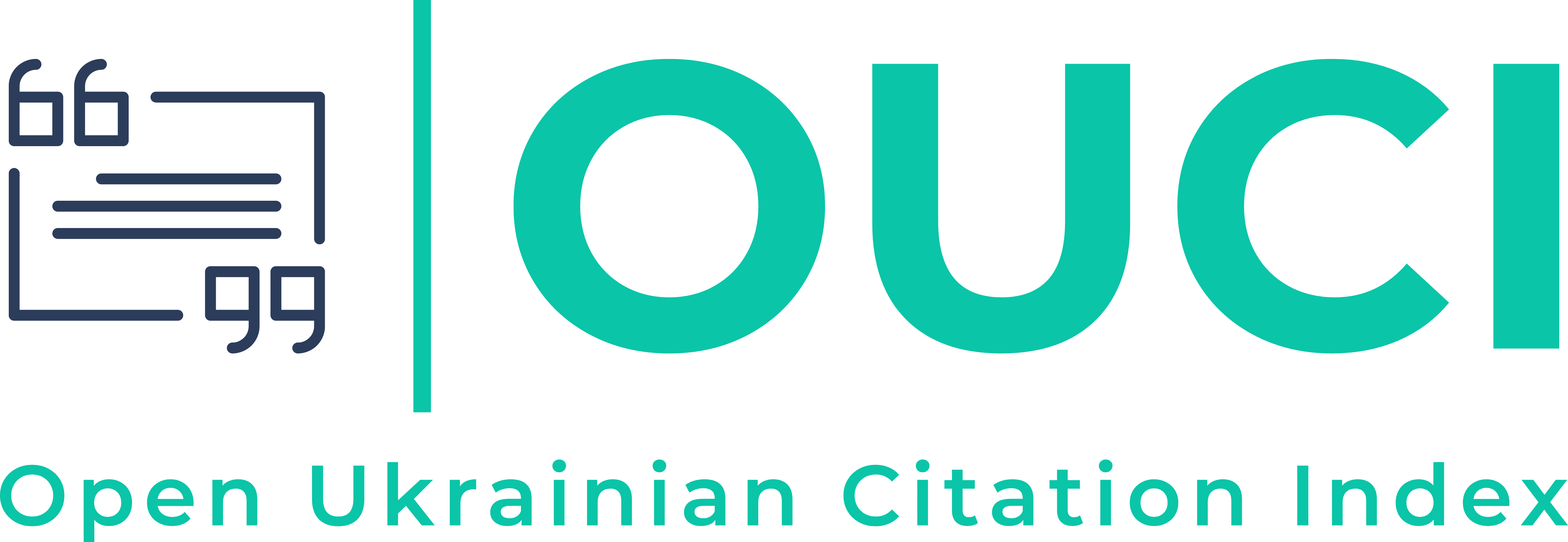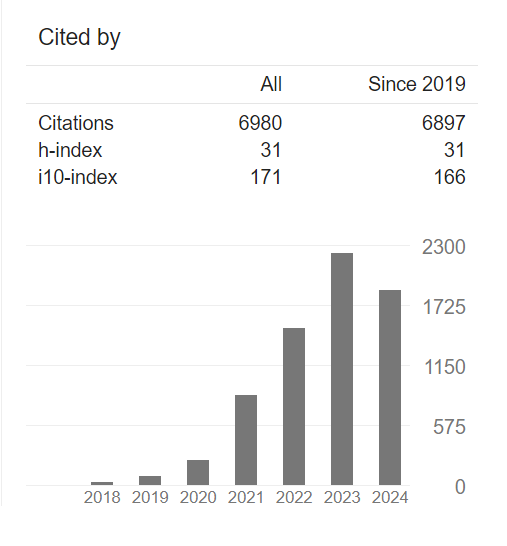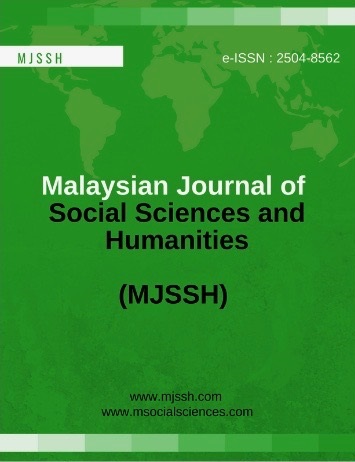Dinamika, Persepsi dan Aspirasi Politik Belia Undi18 Sabah: Model Konseptual dan Kerangka Analisis
Abstract
Sejarah baharu tercipta di Malaysia pada tahun 2019 apabila “Undi18” merupakan satu inisiatif bagi memperkukuh amalan demokrasi melalui penyertaan inklusif golongan belia dalam politik, yang telah membolehkan individu muda berusia 18 tahun ke atas untuk mengundi serta bertanding sebagai calon dalam pilihan raya. Kesan pelaksanaan “Undi18” telah membuka perdebatan tentang sejauh mana tahap kesedaran dan literasi politik serta penghayatan tentang peranan, hak dan tanggungjawab kewarganegaraan demokratik khususnya dalam kalangan golongan belia di Malaysia yang bakal mencorakkan hala tuju dan masa depan negara. Sehubungan dengan itu, makalah ini bermatlamat memperkenalkan suatu model konseptual dan kerangka analisis bagi menyelidik, mengenalpasti serta menelusuri persepsi, pandangan dan aspirasi politik yang menentukan trend, corak dan pola pengundian golongan belia ‘Undi18’ di Sabah. Secara spesifik, ia mencadangkan pengaplikasian suatu model yang berteraskan kepada beberapa teori/konsep politik dan politik elektoral (electoral politics) yang berkait rapat dan saling memperkukuh antara satu sama lain sebagai kerangka analisis. Model tersebut adalah bersandarkan kepada dua pembolehubah yang mewakili ketiga-tiga objektif kajian, yakni “dinamika”, “persepsi” dan “aspirasi” politik belia Undi18 di Sabah. Pembolehubah “dinamika” dan “persepsi” bertindak sebagai Pembolehubah Bebas (Independent Variable) yang merangkumi komponen dan konstruk berteraskan kelompok teori/konsep politik dan politik elektoral yang cenderung mempengaruhi “aspirasi” ataupun keyakinan dan kecenderungan sokongan mahupun pilihan politik belia kohot Undi18 Sabah, yakni Pembolehubah Tetap (Dependent Variable) dalam model konseptual tersebut. Pembolehubah Bebas merangkumi lapan konstruk yang lazim dikaitkan dengan politik dan dinamika elektoral Malaysia, iaitu sentimen primordial, semangat kenegerian, hubungan Persekutuan-Negeri, budaya patron-client, pembangunan, isu sosio-ekonomi, penggunaan media, governan dan tadbir urus.
Downloads
References
Abdullah, N. H., Hassan, I., Ahmad, M. F., Hassan, N. A., & Ismail, M. M. (2021). Social Media, Youths and Political Participation in Malaysia: A Review of Literature. International Journal of Academic Research in Business and Social Sciences, 11(4), 845-857.
Ahmad, Z. & Mohd Zain. (2021). Political Involvement among Youth in Malaysia: Lessons Learnt. International Journal of Media and Communication Research, 2(1), 11-22. https://doi.org/10.25299/ijmcr.v2i1.6122.
Alin, J. & Malasius, M. (2021). Chapter 3 - The Unemployment Problem during the Warisan Plus Administration. In B. Welsh, V. Somiah, B. Loh (Eds.). Sabah from the Ground: The 2020 Elections and the Politics of Survival (pp. 61-82). Strategic Information and Research Development Centre.
Allahar, A. L. (1996). Primordialism and Ethnic Political Mobilization in Modern Society. New Community, (22)1, 5-22.
Azahar, K. (2022, October 25). Special Report - GE15: Young voters will make an impact —only if they are politically aware. The Edge. https://theedgemalaysia.com/article/special-report-ge15-young-voters-will-make-impact-%E2%80%94-only-if-they-are-politically-aware
Aziz, A. A. A. (2023). Beyond Undi18, youth empowerment in Malaysia now needs electoral system reform. The Round Table, 112(3), 341–342. https://doi.org/10.1080/00358533.2023.2219532.
Bakker, T. P. & De Vreese, C. H. (2011). Good news for the future? Young people, Internet use, and political participation. Communication Research, 38(4), 451–470.
Bednar, J. (2011). The Political Science of Federalism. Annual Review of Law and Social Science, 7, 269–288. https://doi.org/10.1146/annurev-lawsocsci-102510-105522.
Bernama. (2024, Mei 16). Isu Hak 40 Peratus Hasil Sabah: mahkamah Tangguhkan Keputusan Rayuan Kerajaan. Bernama. https://www.bernama.com/bm/news.php?id=2298544.
Chai, J. (2022, August 4). Malaysia’s GE15: Not All Youth Votes Are Equal. Fulcrum: Analysis on Southeast Asia, 2022/232. https://fulcrum.sg/malaysias-ge15-not-all-youth-votes-are-equal/#:~:text=While%20these%20seats%20are%20generally,seats%2C%20the%20contrast%20is%20stark.
Chan, T. S. (2021). Chapter 1 - Warisan Plus in Government: A Retrospective from the Campaign and Beyond. In B. Welsh, V. Somiah, B. Loh (Eds.). Sabah from the Ground: The 2020 Elections and the Politics of Survival (pp. 21-38). Strategic Information and Research Development Centre.
Chhibber, P. (2013). Dynastic parties Organization, finance and impact. Party Politics. 19(2), 277–295. https://doi.org/10.1177/1354068811406995.S2CID144781444.
Chin, J. (1994). Sabah State Election of 1994: End of Kadazan Unity. Asian Survey, 34, 904-915.
Chin, J. (1997). Politics of Federal Intervention in Malaysia, With Reference to Sarawak, Sabah and Kelantan. The Journal of Commonwealth & Comparative Politics, 35(2), 96-120.
Chin, J. (1999). Going East: UMNO’s Entry Into Sabah Politics. Asian Journal of Political Science, 7, 20-40.
Chin, J. (2014). MALAYSIA IN 2013: Najib’s Pyrrhic Victory and the Demise of 1Malaysia. Southeast Asian Affairs, 175–189. http://www.jstor.org/stable/44112072.
Chin, J. (2023) Anwar’s long walk to power: the 2022 Malaysian general elections, The Round Table, 112(1), 1-13. https://doi.org/10.1080/00358533.2023.2165303.
Chin, J. & Puyok, A. (2010). Going Against the Tide: Sabah and the 2008 Malaysian General Elections. Asian Politics and Policy, 2(2), 219-325.
Chong, R. (2022, October 18). Young people in Sabah still politically blind, won’t care to vote: youth council. TheVibes.com. https://www.thevibes.com/articles/news/74499/youths-awareness-still-low-they-wont-care-to-vote-sabah-youth-council.
Crouch, H. (1996). Government and Society in Malaysia. Cornell University Press.
Daily Express. (2022, March 26). 485,939 new voters aged 18 in Sabah. Daily Express. https://www.dailyexpress.com.my/news/189504/485-939-new-voters-aged-18-in-sabah/.
Deviyati, A. (2023). PAS’s decades of hard work paid off with the Green Wave in Malaysia’s GE15. The Round Table, 112(3), 339–340. https://doi.org/10.1080/00358533.2023.2219531.
Dimitrova, D. V. & Bystrom, D. (2013). The effects of social media on political participation and candidate image evaluations in the 2012 Iowa caucuses. American Behavioral Scientist, 57(11), 1568-1583.
Dollah, R., Sakke, N., Wan Hassan, W. S., Omar, M. A. & Jafar A. (2018). Peranan Belia dan PRU-14 Di Sabah: Kajian Kes di P.188 Silam. Jurnal Kinabalu, Edisi Khas, 319-349.
Dzukifly, D. (2022, October 20). Youth voters form 50% of GE15 electoral roll: EC. TheVibes.com. https://www.thevibes.com/articles/news/74747/youth-voters-form-50-of-ge15-electoral-roll-ec.
Embong, A. R. (2008). Chapter 2. Developmentalist State in Malaysia: Its Origins, Nature, and Contemporary Transformation. In J. M. Nelson, Meerman, J. Embong. A. R. (Eds.). Globalization and National Autonomy: The Experience of Malaysia (pp. 27-58). Institute of Southeat Asian Studies (ISEAS) Publishing.
Fong, B. C. H. & Ichijo, A. (2022). The Routledge Handbook of Comparative Territorial Autonomies. Routledge.
Funston, N. J (1980). Malay Politics in Malaysia: A Study of the United Malays National Organisation and Party Islam. Heinemann Educational Books (Asia).
Geertz, C. (1973). The Interpretation of Cultures. Basic Books.
Gomez, E. T. & Jomo, K. S. (1997). Malaysia's Political Economy: Politics, Patronage and Profits. Cambridge University Press.
Govindasamy, A. R. (2020). The Sabah State Election: A Narrow Win and Precarious Mandate for the New Government. Perspective, 2020, Number 133. Yusuf Ishak Institute of Southeast Asian Studies (ISEAS).
Govindasamy, A. R. & Lai, Y. M. (2014). Kota Kinabalu, Sabah: BN Loses Its ‘Fixed Deposit. In M. L. Weiss (Ed.). Electoral Dynamics in Malaysia: Findings from the Grassroots (pp. 209-222). Strategic Information and Research Development Centre (SIRD) and Institute of Southeast Asian Studies (ISEAS).
Govindasamy, A. R. & Lai, Y. M. (2018). GE14: The Urban Voting Pattern in P172 Kota Kinabalu and P186 Sandakan, Sabah. Jebat: Malaysian Journal of History, Politics & Strategy, 45(2), 298-318.
Han, S. F. (1979). A Constitutional Coup d’ Etat: An Analysis of the Birth and Victory of the BERJAYA Party in Sabah, Malaysia. Asian Survey, 19, 379-389.
Hazis, F. S. (2015). Patronage, power and prowess: Barisan Nasional’s equilibrium dominance in East Malaysia, Kajian Malaysia, 33(2),1-24.
Hilley, J. (2001). Malaysia: Mahathirism, Hegemony and the New Opposition. Zed Books.
Hobsbawm, E. & Ranger, T. (1983). The Invention of Tradition. Cambridge University Press.
Hutchcroft, P. (2014). Linking Capital and Countryside: Patronage and Clientelism in Japan, Thailand, and the Philippines. In Brun, D. A. & Diamond, L. (Eds.). Clientelism, Social Policy, and the Quality of Democracy (pp. 174-203). John Hopkins University Press.
Hutchinson, F. & Lee, H. A. (ed.). (2019). The Defeat of Barisan Nasional: Missed Signs or Late Surge?, Yusof Ishak Institute of Southeast Asian Studies (ISEAS).
Ismail, M. M., Adnan, Z. H. & Ishak, M. S. (2023). Kecenderungan Pengundi baharu dalam pilihan raya umum ke-15. Jebat: Malaysian Journal of History, Politics & Strategic Studies, 50(2), 224-240. https://doi.org/10.17576/jebat.2023.5002.08.
Jafar, A., Othman, Z., Sakke, N., Dollah, R., Joko, E. P. & Abdul Rahim, M. S. (2021). Understanding youth political demand based on demographic patterns in Malaysia: An overview of parochialism and development in the Sabah state election 2020. Journal of Legal, Ethical and Regulatory Issues, 24 (Special Issue 1), 213-230. https://www.researchgate.net/publication/353972367.
Jesselton Times. (2024, March 27). Young voters could be the next Sabah election’s kingmakers. Jesselton Times. https://jesseltontimes.com/2024/03/27/young-voters-could-be-the-next-sabah-elections-kingmakers/.
Johnson, S. & Mitton, T. (2001). Cronyism and Capital Controls: Evidence from Malaysia. NBER Working Paper Series, Working Paper 8521. National Bureau of Economic Research.
Jomo, K. S. (1996). Malaysia’s Economic Development. Pelanduk Publication.
Kalimuthu, K. R. (1986). The Sabah State Elections of April 1985, Asian Survey, 26, 815-837.
Kasmani, F. (2023). Undi 18: Understanding the political participation of first-time Malay voters through social media. Journal of Media and Communication Research. Special Issue: SEARCH 2022 Conference, 33-48.
Kathirasen, A. (2022, November 21). 5 reasons for the GE15 green wave. Free Malaysia Today. https://www.freemalaysiatoday.com/category/opinion/2022/11/21/5-reasons-for-the-ge15-green-wave/.
Khalid, M. A. (2014). The Colours of Inequality: Ethnicity, Class, Income and Wealth in Malaysia. MPH Group Publishing.
Khatri, N., Tsang, E. W. K., & Begley, T. M. (2006). Cronyism: A Cross-Cultural Analysis. Journal of International Business Studies, 37(1), 61–75. https://doi.org/10.1057/palgrave.jibs.8400171.
Lai, Y. M. (2002), The 1999 Sabah State Elections: A Vote for Continuity, Change and Development. Universiti Malaysia Sabah.
Lai, Y. M. (2015). Malaysia’s security concerns: a contemporary assessment. In M. L. Weiss (Ed.), Routledge Handbook of Contemporary Malaysia (pp.391-402). Routledge.
Lai, Y. M. (2022). Sabah: Autonomy and Integration within the Malaysian Federation. In B. C. H. Fong & Ichijo, A. (Eds.). The Routledge Handbook of Comparative Territorial Autonomies (pp. 273-284), Routledge.
Lee, M. H. (2022). Malaysia GE15: Low political literacy and indecisiveness limit youth votes. Institute of Strategic and International Studies (ISIS) Malaysia. https://www.isis.org.my/2022/11/14/malaysia-ge15-low-political-literacy-and-indecisiveness-limit-youth-votes/
Leigh, M. B (1988). The Rising Moon: Political Change in Sarawak, Sydney University Press.
Lim, I. (2021, December 8). Law Minister: With Undi18, Malaysia to have 5.8 million new voters; total to leap from 15.8 million to 21.1 million. Malay Mail. https://www.malaymail.com/news/malaysia/2021/12/08/law-minister-with-undi18-malaysia-to-have-5.8-million-new-voters-totalto-l/2026978
Loh, B. L. & Ho, Y. J. (2021). Chapter 8 - ‘Don’t Jump, Time to Work’: Politiical maturity of Sabah Digital Spaces through the 2020 State Elections. In B. Welsh, V. Somiah & B. Loh (Eds). Sabah from the Ground: The 2020 Elections and the Politics of Survival (pp. 167-189). Strategic Information and Research Development Centre.
Loh, F. K. W. (2003). Electoral Politics in Sabah, 1999: Gerrymandering, “Phantoms”, and the 3Ms. In K. W. Loh, & J. Saravanamuttu. (Eds.), New Politics In Malaysia (pp. 228-252). Institute of Southeast Asian Studies.
Loh, F. K. W. (2009). Old vs New Politics in Malaysia: State and Society in Transition. Strategic Information and Research Development Centre.
Loh, K. W. (1987). Politik Kadazan dan Asal-Usul Kemunculan Parti Bersatu Sabah Pada Tahun 1980-an. Kajian Malaysia: Journal of Malaysian Studies, 9, 88-124.
MalaysiaKini. (2023, July 20). GE15: Was The ‘Green Wave’ Powered By Young Voters? MalaysiaKini. https://newslab.malaysiakini.com/greenwave-generational-gap/en/.
Marzuki, M., Mozihim, A. K. & Roslan, F. (2021). Undi Sabah: Igniting Youth Participation in Sabah’s Democracy. In Welsh, B., Somiah, V. & Loh, B. (eds). (2021). Sabah from the Ground: The 2020 Elections and the Politics of Survival. Petaling Jaya: Strategic Information and Research Development Centre.
Mauzy, D. K. (1983). Barisan Nasional: Coalition Government in Malaysia. Marican & Sons.
Mauzy, D. K. & Milne, R. S. (1999). Malaysian Politics under Mahathir. Routledge.
Md Razali, N. S. and Muhamad, R. (2022). Penyertaan Politik dalam kalangan Belia dengan Menggunakan Media Sosial. Malaysian Journal of Social Sciences and Humanities (MJSSH), 7(12), p. e002019. https://doi.org/10.47405/mjssh.v7i12.2019.
Mersat, I. N. (1999). Sabah and Sarawak in the 10 Malaysian General Election: Issues and Voting Pattern. Borneo Review, 10, 111-139.
Milne, R. S. (1964). Malaysia. Asian Survey, 4(2), 695–701. https://doi.org/10.2307/3023577
Milne, R. S. (1973). Patrons, Clients and Ethnicity: The Case of Sarawak and Sabah in Malaysia. Asian Survey, 13, 891-908.
Milne, R. S. (1983). Barisan Nasional. Coalition Government in Malaysia. Kuala Lumpur: Marican & Sons.
Milne, R. S., & Ratnam, K. J. (1974) Malaysia – New States in a New Nation: Political Development of Sarawak and Sabah in Malaysia. Routledge.
Mohd Basori, N. E. & Awang Besar, J. (2020) Politik Belia dan Pilihan Raya Umum ke-14 di Malaysia. e-BANGI: Jurnal Sains Sosial dan Kemanusiaan, 17(7), 49-65. https://ejournal.ukm.my/ebangi/article/view/41589.
Mohd Hed, N., & Grasso, M. T. (2020). Age group differences in political activism in Malaysia. Journal of Youth Studies, 23(6), 765–779.
Mohd Nizah, M. A. & Abu Bakar, A. R. (2022). UNDI 18 dinamika politik dan keselamatan negara: Analisa daripada pilihan raya negeri Johor 2022. Journal of Public Security and Safety, 14(2), 1-16.
Mohamad, B., Dauda, S. A., & Halim, H. (2018). Youth offline political participation: Trends and role of social media. Jurnal Komunikasi: Malaysian Journal of Communication, 34(3), 192–207.
Muslim, N. (2023, August 11). Analysis: Young Voters Helped 'Green Wave' at Ge15 But Will They Show Up Again? Bernama. https://www.bernama.com/en/bfokus/news.php?analysis&id=2215285
Nadzri, M. M. N. (2018). The 14th General Election, the Fall of Barisan Nasional, and Political Development in Malaysia, 1957-2018. Journal of Current Southeast Asian Affairs, 37(3), 139-171. https://doi.org/10.1177/186810341803700307
Nadzri, M. M. N., & Azlan, A. A. (2023). UMNO in GE15: factionalism and its effects. The Round Table, 112(3), 273–285. https://doi.org/10.1080/00358533.2023.2219536.
New Straits Times. (2022, September 22). Sabah Youth Council to engage 10,000 youth in simulated elections, state assembly sitting. New Straits Times. https://www.nst.com.my/news/nation/2023/09/959461/sabah-youth-council-engage-10000-youth-simulated-elections-state-assembly.
Ongkili, J. F. (1992). A History of the Development of Federalism in Southeast Asia: The Malaysian Case, 1985-1990. Asian Perspective, 16(2), 155–179. http://www.jstor.org/stable/42703999.
Ostwald, K. (2024). The Power of a Vote in Malaysia: Malapportionment Under UNDI18, AVR, and MA63. ISEAS Perspective, Number 30. Yusof Ishak Institute of Southeast Asian Studies (ISEAS).
Pepinsky, T. B. (2013). The new media and Malaysian politics in historical perspective. Contemporary Southeast Asia, 35(1), 83-103.
Puyok, A. & Bagang, T. P. (2011). Ethnicity, Culture and Indigenous Leadership in Modern Politics: The Case of the Kadazandusun in Sabah, East Malaysia. Kajian Malaysia: Journal of Malaysian Studies, 29(1), 177-197.
Puyok, A., & Sukhani, P. R. (2020). Sabah: breakthrough in the fixed deposit state. The Round Table, 109(2), 209–224. https://doi.org/10.1080/00358533.2020.1741888
Salman, A., Yusoff, M. A., Salleh, M. A., & Abdullah, M. Y. (2018). Penggunaan media sosial untuk sokongan politik di Malaysia. Journal of Nusantara Studies 3(1), 51-63. doi:10.24200/jonus.vol3iss1
Samad, J. A. (2021). The 1963 Malaysia Agreement: Pakatan’s failed restoration and Perikatan’s fledgling initiatives. In B. Welsh, V. Somiah & B. Loh (Eds.). Sabah from the Ground: The 2020 Elections and the Politics of Survival (pp.39-60. Strategic Information and Research Development Centre.
Santos, J. (2022, October 28). Young generation can influence election outcome: Sabah Youth Council. TheVibes.com. https://www.thevibes.com/articles/news/75473/young-voters-can-influence-election-outcome-sabah-youth-council.
Shefter, M. (1994). Political Parties and the State: The American Historical Experience. Princeton University Press.
Shils, E. (1957). Primordial, Personal, Sacred and Civil Ties. British Journal of Sociology, 8(2), 130-145.
Shils, E. (1968). Color, the Universal Intellectual Community, and the Afro-Asian Intellectual. In J. H. Franklin. (Ed.). Color and Race (pp. 1-17). Houghton Mifflin.
Sinar Harian. (2022, Oktober 22). Lebih sejuta belia usia 18 hingga 20 tahun mengundi kali pertama. Sinar Harian. https://www.sinarharian.com.my/article/226836/berita/nasional/lebih-sejuta-belia-usia-18-hingga-20-tahun-mengundi-kali-pertama.
Skoric, M. M. & Poor, N. (2013). Youth engagement in Singapore: The interplay of social and traditional media. Journal of Broadcasting & Electronic Media, 57(2), 187–204.
Suruhanjaya Pencegahan Rasuah Malaysia (SPRM). (2020, November 15). Wang Politik dan Politik Wang. Suruhanjaya Pencegahan Rasuah Malaysia (SPRM). https://www.sprm.gov.my/admin/uploads_publication/wang-politik-dan-politik-wang-jurnal-my-15112020.pdf.
Tangit, T. (2021). Chapter 6 - Sabah’s Youth Talk Politics: Ethnic Identity, Illegal Migrants and Religious Freedom. In B. Welsh, V. Somiah & B. Loh (Eds.). Sabah from the Ground: The 2020 Elections and the Politics of Survival (pp. 133-150). Strategic Information and Research Development Centre.
The Star. (2022a, January 22). Undi18 a wild card with young new voters. The Star. https://www.thestar.com.my/news/nation/2022/01/19/undi18-a-wild-card-with-young-new-voters.
The Star. (2022b, December 9). A dire need for political literacy. The Star. https://www.thestar.com.my/news/nation/2022/12/09/a-dire-need-for-political-literacy.
The Star. (2022c, November 17). GE15: Young voters in Sabah likely to pick people-friendly candidates, says state youth council. The Star. https://www.thestar.com.my/news/nation/2022/11/17/ge15-young-voters-in-sabah-likely-to-pick-people-friendly-candidates-says-state-youth-council
The Star. (2022d, November 13). GE15: Youth in Sabah excited to vote, learning importance of their ballot. The Star. https://www.thestar.com.my/news/nation/2022/11/13/ge15-youth-in-sabah-excited-to-vote-learning-importance-of-their-ballot.
The Straits Times. (2022, December 9). Almost 90% of young Malaysian voters unaware of current political developments: Survey. The Straits Times. https://www.straitstimes.com/asia/se-asia/almost-90-of-young-voters-unaware-of-current-political-developments-malaysian-survey.
Utusan Malaysia. (2023, Julai 25). MA63: Setahun tempoh selesai isu 40 peratus hasil Sabah. Utusan Malaysia. https://www.bharian.com.my/berita/nasional/2023/07/1131005/ma63-setahun-tempoh-selesai-isu-40-peratus-hasil-sabah.
Vasil, R. K. (1965). The 1964 General Elections in Malaya. International Studies, 7(1), 20-65. https://doi.org/10.1177/002088176500700102.
Weiss, M. L. (2013). Malaysia’s 13th General Elections: Same Result, Different Outcome. Asian Survey, 53(6), 1135–1158. https://doi.org/10.1525/as.2013.53.6.1135.
Weiss, M. L. (2014). Electoral Dynamics in Malaysia: Findings from the Grassroots. Strategic Information Research Development Centre.
Welsh, B. (2023, March 23). GE15 voting analysis – Part 6: A Sabah mix. Bridgetwelsh.com. https://bridgetwelsh.com/articles/ge15-voting-analysis-part-6-a-sabah-mix/
Welsh, B., Somiah, V. & Loh, B.. (2021a). Sabah from the Ground: The 2020 Elections and the Politics of Survival. Strategic Information and Research Development Centre.
Welsh, B., Somiah, V. & Loh, B. (2021b). Introduction - Sabah Goes to the Polls. In B. Welsh, V. Somiah & B. Loh (Eds.). Sabah from the Ground: The 2020 Elections and the Politics of Survival (pp. 1-20). Strategic Information and Research Development Centre.
Wheare, K. (1946). Federal Government. Oxford University Press.
Wong, C. H. (2023). Introduction: Hung parliament, coalition government and the rise of the Islamists – Malaysia after the 2022 election. The Round Table, 112(3), 207–212. https://doi.org/10.1080/00358533.2023.2219522.
Woo-Cumings, M. (1999). The Developmental State (1st edition). Cornell University Press.
Wylde, C. (2017). Emerging Markets and The State: Developmentalism in the 21st Century. Palgrave Macmillan.
Yaakub, M. T., Mohd Kamil, N. L. & Wan Mohamad Nordin, W. N. A.. (2023). Youth and political participation: What factors influence them? Institutions and Economies. 15(2), 87-114. https://doi.org/10.22452/IJIE.vol15no2.4
Yusoff, M. A. (2000). ‘The Politics of Centre-State Relations: The Sabah Experience Under The Ruling Opposition Parti Bersatu Sabah (PBS) Government. In M. Leigh (Ed.), Borneo 2002. Proceedings of the Sixth Biennial Borneo Research Conference (pp.513-546). IEAS, UNIMAS, Kuching.




